Epsom salt, a versatile and natural mineral compound, plays a vital role in enhancing the fitness and energy of your garden plants. It is rich in magnesium and sulfate which assist to improve overall growth of plants, encourage luxuriant foliage and flower production, as well as boost nutrient uptake. If you are an experienced gardener or a beginner, knowing how to mix and apply Epsom salt properly can bring amazing advantages to your garden. This article will take you through the guidelines for making Epsom salt mixtures and provide useful advice on their effective utilization so that your garden prospers.
Why Use Epsom Salt on Plants?
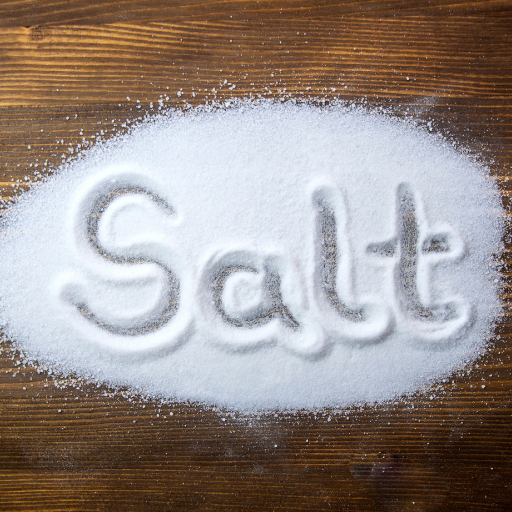
Epsom salt, an exceptional source of magnesium, is a nutrient that is frequently deficient in soil. Sunlight powers numerous processes through photosynthesis with one of them being magnesium essential. It further enhances the process of chlorophyll production necessary for leaf growth and development. Epsom salt also improves the uptake of other major nutrients like nitrogen and phosphorus, fostering general well-being and growth of plants. Therefore, the use of Epsom salt can help gardeners to address soil deficiencies thereby making their plants healthier and more productive consequently resulting into more colorful blossoms as well as fruits and vegetables.
What are Epsom Salt Uses and Why Should I Care?
This naturally occurring mineral compound is also known as Magnesium sulfate or Epsomite; it contains sulphur, oxygen and magnesium too. This is because plants use this element in their chlorophyll molecule – the pigment which absorbs sunlight during photosynthesis. Enzymes are made up of essential amino acids found in plants which sulfur from Epsom salts contributes to protein synthesis. The incorporation of these salts into gardening routines will help correct any deficiency caused by the absence of enough amounts of magnesium in the soil, thereby increasing the photosynthesis process within the plant’s leaves and improving the nutrient absorption rate, leading to healthy, strong plant, vigorous plant growth.
How does Garden Epsom Salt work?
The benefits derived from using this compound while gardening largely stems from high levels of magnesium and sulfur present in it. In connection with this, it should be noted that chlorophyll molecules cannot be complete without adequate amounts or the presence of magnesium ions that form their integral parts (Buenemann & Zasoski 2000). It allows plants to convert sunlight into carbohydrates for respiration energy, enabling vegetative growth (Freeman et al., 2007). By ensuring that sufficient supplies are available for photosynthesis purposes within the plant, ample amounts will lead to beautiful strong plants with better flowers and high yields.
In addition, the presence of sulfur in Epsom salts enhances the synthesis of essential amino acids and enzymes necessary for the metabolism and general health of a plant. These include plant proteins as well as some vitamins, particularly those rich in thiamine (B1) like sulfur (Cooper et al., 2002). Regarding technical parameters, these are the rates at which Epsom salt should be applied: one tablespoon per gallon of water for plants needing more magnesium is suggested. For gardens with known magnesium deficiency, about one cup of salts should be used per 100 square feet soil space twice annually. This specific use can go a long way towards enhancing the health status of plants resulting in more vibrant and productive landscapes.
What Macro Elements Does Epsom Salt Contain?
The two vital elements constituting this mineral compound are sulfur and magnesium or Magnesium sulphates as referred to chemically. Its incorporation into chlorophyll has made this element essential in photosynthesis in chlorophyll formation. On the other hand, sulphur is important for biosynthesis since it is required to make amino acids that become building blocks for polypeptides and enzymes needed by cells.
- Dissolve 1 tablespoon Epsom salt per gallon water for plants requiring more magnesium.
- Use approximately one cup Epsom salt over each hundred feet square twice annually where magnesium levels are low.
All these were based on scientific studies that show how effective using Epsom salt can be when it comes to increasing plant productivity through improving their overall health.
How to Mix Epsom Salt for Different Types of Plants
Mix 1 tablespoon of Epsom salt in a gallon of water for tomatoes, peppers, and roses; then spray every two weeks. For trees, put 2 tablespoons per 9 square feet by evenly sprinkling the salt around the base after it is dissolved in water. Dissolve 2 tablespoons of Epsom salt into a gallon of water and use it to water your houseplants monthly. Spreaders are ideal for applying three pounds of Epsom salt to lawns that measure 1,250 square feet before thorough watering (Moore). One should always test soils as well as consider plant-specific needs before using any amount of Epsom salts.
How Much Salt Per Gallon Of Water?
One tablespoonful is recommended for most plants (Kimberly). This strength is suitable as foliar feeding and ordinary watering to boost nutrient uptake, thus enhancing the overall welfare of the plants.
- Gardening Know How:
- Vegetables need one tablespoonful per gallon every fortnight (Jacob).
- This dose works great with roses and helps them have more flowers with healthier leaves.
- Epsom Salt Council:
- For houseplants only mix two tablespoons fulls in each gallon every month. This encourages vibrant growth and can correct certain common deficiencies.
- For lawns apply three pounds diluted into water and spread over a thousand two hundred fifty feet followed by normal watering schedules (Molly).
- The Spruce:
- In tomato crops, you will be required to prepare a solution containing one tablespoon full of Epsom salt mixed with one gallon of water then sprayed every fourteen days during growing season (Andrews).
- A dilute solution of two tablespoons per nine square feet is used on trees so that when mixed with plenty of water, they may be fully distributed around their bases (Boswell).
These ratios and application methods are based on extensive gardening research and agronomic practices to optimize plant health and productivity.
Is There a Specific Ratio for Tomato Plants?
Yes, there is a specific ratio for tomato plants when using Epsom salt.
- Use this mixture to spray tomatoes at the rate of one tablespoonful per gallon of water after every two weeks of their growing time. This improves tomatoes’ nutrient intake, hence increasing their yield and flavor.
- As an alternative to spraying, mix one tablespoon of Epsom salt into the ground right at the base of each plant once every month (Bennett).
These methods are derived from reputable gardening resources and are designed to address common nutrient deficiencies that tomato plants face, such as magnesium deficiency, thereby promoting healthier growth and better fruit production.
How to Use Epsom Salt in Potted Plants?
- For General Application: Dissolve 2 tablespoons of Epsom salt in a gallon of water then feed your potted plants with this solution every month. In these ways, you will be able to provide essential elements like sulphate and magnesium which are vital for nourishment (Jane).
- For Flowering Plants: Use 1 tablespoon of Epsom salt in a gallon of water, and apply 2 to 4 weeks. This will increase flowering and enhance the general appearance of flowers.
- For Vegetables: During the growing season, use a solution made by mixing 1 tablespoonful of Epsom salt with one gallon of water every two weeks. This encourages higher productivity and better taste, especially among plants like tomatoes and peppers.
These recommendations have been developed through extensive research to ensure that all nutrients are absorbed in their best form for improved overall plant health. Epsom salt should be used properly to correct nutrient deficiencies and support optimum growth and high productivity in potted plants.
When and How to Apply Epsom Salt?
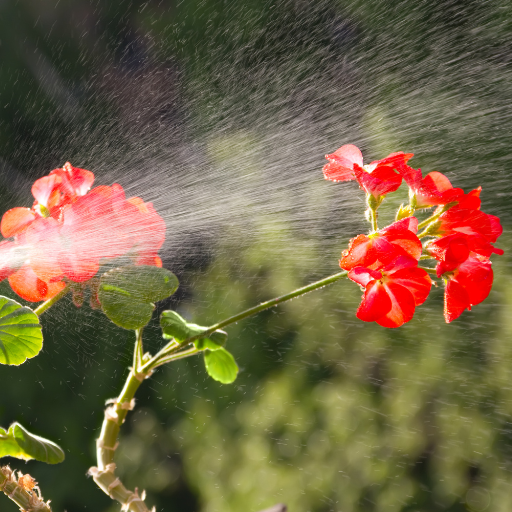
To get the best results, apply magnesium sulfate In the early morning or late afternoon before the sun gets too hot and cause fast drying reducing its effectiveness. When using Epsom salt for plants, make sure it’s of the right concentration. Dissolve 1-2 tablespoons of Epsom salt into a gallon of water for general use and apply this solution to the soil directly on the base of the plant or use a foliar spray by lightly misting on leaves. Repeating this treatment every one-two weeks can help correct and prevent nutrient deficiencies. Always monitor how your plant responds and adjust frequency as well as concentration accordingly so as to avoid over application that might result in salt build up in soils.
Directly Apply Epsom Salt Into Soil Or Dilute It?
Applying Epsom salt straight into soil may be effective in correcting magnesium deficiency in plants while in most cases, it is recommended that you dilute it with water for easy absorption also avoiding problems such as building up salts. The standard practice according to Horticultural sources is dissolving 1-2 tablespoons of Epsom salt per gallon of water. This solution should be used directly at the bottom part of the plant or sprayed onto them.
- Soil Application: Mix together 1-2 tablespoons of Epsom salt per gallon of water
- Foliar Spray: dissolve 1 tablespoon of Epsom salt per one gallon of water then mist leaves.
Through dilution method, evenly distributed and readily available root and leaf absorption system make efficient nutrient uptake possible through even distribution system through which they are absorbed by roots or are taken up in leaves easily due to availability all around them facilitating more efficient nutrition. Always watch out for negative reactions from plants; change your mixture level if necessary for optimal growth conditions.
What Is The Best Season To Add Epsom Salt?
Spring and summer are generally advantageous times to add Epsom salt to your plants as they require more nutrients at this time. During these months, when the plants are actively growing, these additional nutrients provided by Epsom salt can be particularly helpful.
- Spring and Early Summer: This is the perfect period to add Epsom salt. Plants prepare for their major growth spurt and have a high need for magnesium and sulfur, which are key for photosynthesis and development. When done at this time, it can assist in ensuring proper growth and flowering.
- Frequency & Concentration: Epsom salt should be applied every 4-6 weeks throughout the growing season. Mix 1-2 tablespoons Epsom salt per gallon of water for soil application or 1 tablespoon per gallon of water for foliar spraying.
- Avoiding Dormancy Periods: In general, avoid applying Epsom salts during fall or winter when many plant go dormant. Instead, use them during times of activity like this will help because what you do not want is too much heat from the extra nitrogen of all these other things – which could lead up into more gunk clogging up on top soils if left unattended during certain seasons where no living thing whatsoever does grow then just decay away until nothing else remains but dirt itself once again.
By following these parameters with adjustments based on your plants’ specific needs and growth cycles, you can effectively maximize health and productivity using Epsom salts in your garden.
Common Mistakes To Avoid When Applying Epsom Salt
- Overuse of Epsom Salt: One of the most frequently made mistakes is applying excess Epsom salt. Applying too much can create nutrient imbalances in the soil, harming plants. Overuse research has found that the soil can become toxic, inhibiting root development and nutrient uptake. Stick to the recommended dosage—1-2 tablespoons per gallon of water applied every 4-6 weeks.
- Ignoring Soil pH Levels: The use of Epsom salts does not change significantly, but it is important to know your soil’s pH before you apply it. Soil with extremely high or low pH levels may interfere with the effectiveness of Epsom salt. Test your soil for its suitability for specific plants; hence, most garden plants should have a pH range of between 6 and 7.
- Applying During Dormancy: Avoid applying Epsom salt during fall and winter when many plants are dormant. When a plant is dormant, its essential processes such as growth and absorption cannot proceed thus making use of Epsom salt senseless. This may lead to build-up of salts in soil that can destroy roots when they resume growth in spring.
- Using on Salt-Sensitive Plants: Some plants are particularly sensitive to salt and can be damaged by Epsom salt applications. These comprise avocadoes, mangoes and some types of beans for instance Ensure you know the specific requirements and sensitivities of your plants before introducing Epsom salt to your gardening routine.
- Not Diluting Properly for Foliar Sprays: In addition, when using it as a foliar spray, one must ensure that he or she dilutes it properly. More than one tablespoon e.g for leaf scorching and damage or other lasting effects if used undiluted for instance Always adhere to the recommended dilution so as not to harm foliage.
By being aware about these common mistakes; you could safely use Epsom salt to help support health in plants.
Can Epsom Salt Improve Plant Growth?
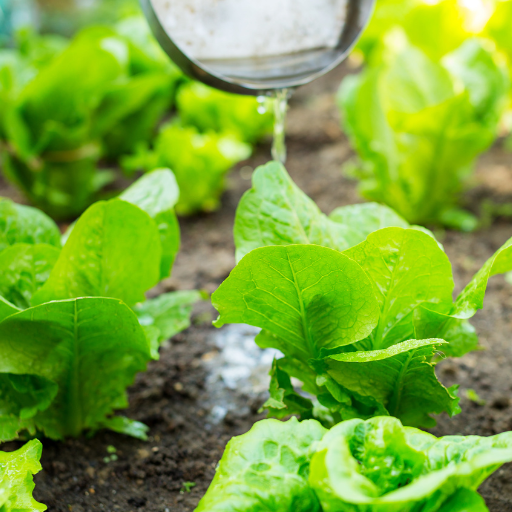
Epsom salt can be used for plants improvement. Epsom salt is made up of magnesium sulfate which is a crucial plant nutrient. Sulfur contributes to the enzymatic function and protein synthesis while magnesium plays a significant role in photosynthesis by helping in chlorophyll production. It’s application will rectify magnesium deficiencies hence leading to healthier and stronger plants. However, using Epsom salts in excess could imbalance your soil or even worse damage your plants.Therefore proper soil tests should be done regularly and as per recommendations given, before using Epsom salt it would benefit the crops.
How Can I Tell If My Plant Needs Epsom Salt?
Some common visible symptoms that could indicate a need for Epsom salts and how you can deal with this situation can be seen below. One key indicator is yellowing leaves between their veins and green veins known as interveinal chlorosis which is a classic sign of low magnesium sulphate levels. Another indication is slow or stunted growth where plants fail to attain their full size and strength potential. Moreover, some flowers may produce less fruit or no blooms at all.In technical terms, you should carry out soil analysis before applying anything.For those whose readings are below 50 ppm (parts per million), supplement them with Epsom salts.Additionally, standard application rate requires one tablespoonfuls of the fertilizer on every nine square feet of land or its diluted solution sprayed on foliage at the rate of one tablespoonful per gallon.Thus these practices ensure that correct amount of magnesium reaches plants without fear of applying too much.
How Does Epsom Salt Improve Blooming And Growth?
Manures like epsom salt, which contains vital elements such as magnesium sulphate, play important roles in promoting blossoming and vegetative growth through physiological processes.Magnesium forms part of chlorophyll molecule needed for photosynthesis thus enabling conversion sunlight into food. This increased energy production promotes healthy plant growth and more vibrant blooms. Furthermore, magnesium is involved in absorbing other important minerals like nitrogen and phosphorous that are necessary for plant health and flowering.
Epsom salt should be applied directly to the ground at a rate of about one tablespoonful per nine square feet or dissolved 1-2 tablespoons in a gallon of water as a foliar spray. This dual application allows plants to absorb magnesium through both roots and leaves. When used regularly every two weeks throughout the growing season, this results in remarkable improvements in plant vigor, blooming, and fruiting patterns.
How Does Epsom Salt Affect Different Types of Plants?
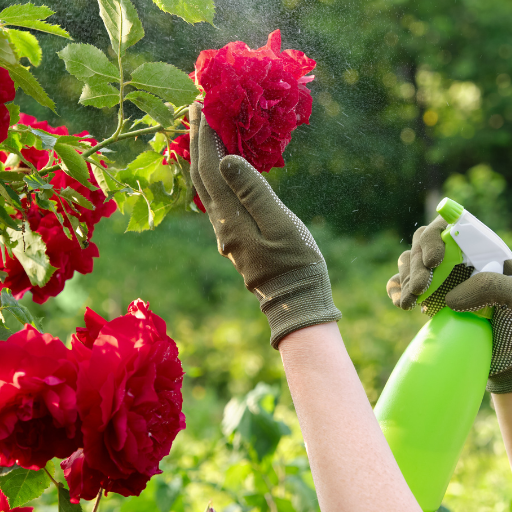
All plants do not react in the same way when exposed to Epsom salt. In regard to roses, it helps improve their colors and makes the blooms brighter or red in color. Cases of blossom-end rot, a common problem that results from magnesium deficiency in tomatoes and peppers, can be avoided by regularly applying Epsom salts. Lawns become greener and thicker after applying Epsom salts due to increased chlorophyll production. Quick mineral nutrients are readily available for houseplants like yellowing leaves, showing symptoms such as slow growth (S) caused by lack of magnesium salt. However, even though many plants experience its advantages, the rates given should never be exceeded since they may cause imbalance of nutrients thus causing danger.
Can Epsom Salt Be Used on Vegetable Gardens?
Epsom salt does help vegetative gardens. It aids seed germination, improves seed viability and increases nutrient uptake especially nitrogen and phosphorus. Magnesium present in Epsom salt is required for chlorophyll formation essential for photosynthesis hence healthy plant growth. Moreover good use might save tomatoes and peppers from blossom end rot while ensuring high yields within the garden. Despite this fact remains that there is need for caution whenever applying this additive as an overdose could lead to unbalanced nutrition.
What Happens to Roses When You Use Epsom Salt?
Magnesium sulfate contained in it leads to a favorable response from rose bushes which require this constituent for healthy foliage through chlorophyll manufacture (F). Rose flowers produced at the base where Epsom salts were added tend to have bigger sizes with more colors and vibrancy than those where it was not applied (G). This will increase cane production giving fuller thicker bushes by stimulating new canes at the base of the plant (H). Application should therefore take place during growing season when bathing or pouring diluted solution on them around their bases is done while foliar spray also works. Continuous usage and the right amounts of Epsom salt leads to healthier growing rose bushes.
Are There Plants that Do Not Benefit from Epsom Salt?
However, some plants do not benefit from the use of Epsom salt and it may even harm them if applied.
- Sage: Too much magnesium can hinder the uptake of other necessary elements, creating an imbalance that, in turn, affects the growth and taste of sage.
- Parsley: Parsley thrives in soil with moderate magnesium levels. Adding Epsom salts may result in too much magnesium, leading to growth difficulties (I).
- Lavender: Lavender prefers well-drained, somewhat alkaline soils. Magnesium sulfate present in Epsom salts could change the pH level, making lavender unsuitable for this type of soil since lavender prefers these nutrients to be moderately low (J).
- Thyme: Thyme is another herb that likes slightly poor soils. The addition of Epsom salts disrupts these conditions, denying these herbs optimal health and development (K).
According to the University of Wisconsin’s Horticulture Department, excessive use of Epsom salts can lead to nutrient toxicities in some plants. From their study findings, high magnesium levels create nutrient imbalances such as potassium and calcium deficiencies that are very essential for plant life (M). Therefore, one must understand the specific needs for each plant type prior to introducing any amount so as to avoid damage done by using too much quantity.
Maximizing the Benefits of Epsom Salt in Your Garden
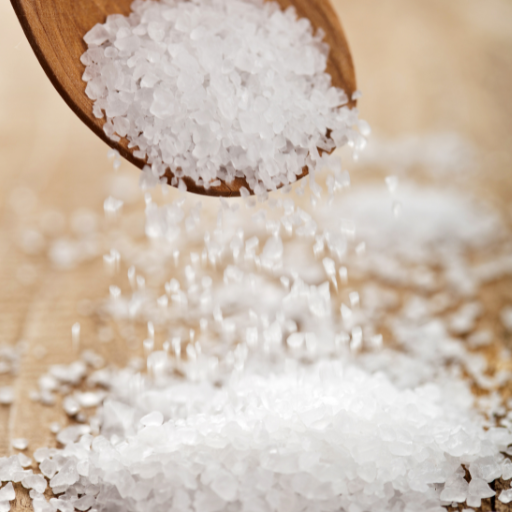
Used in the right way, Epsom salt can be a valuable addition to your garden. To get the best out of it, start by knowing what exactly your plants need. For instance tomatoes, peppers and roses tend to gain much from the additional magnesium and sulfur provided by Epsom salts. Dissolve one tablespoon of Epsom salt in a gallon of water and apply at the base of the plants every two to four weeks for effective use. Epsom salt can also be used as soil amendment at planting time or foliar spray for magnesium deficiency correction. Nonetheless, a soil test has to be done prior its application in order not to overuse it which may lead to nutrient imbalances posing health problems among other things. Use it sparingly and observe plant reactions for possible adjustments.
How Can One Ensure Proper Mixing of Epsom Salt?
To ensure that you have properly mixed up your Epsom salt consider these steps:
- Measure precisely: Take the recommended dosage of Epsom salts—usually one tablespoon per gallon of water for general garden use; foliar sprays should contain two tablespoons per gallon.
- Dissolve: Mingle the Epson salt completely with water: warm water will dissolve all particles before application.A generation error occurred during generation. If this continues please try again or contact support.
Epsom Salt Long Term Use Best Practices
When applying Epsom salt into your gardening practices over an extended period, remember to employ these best practices aimed at sustaining plant health and soil balance:
- Soil Sampling after Some Time: Every 1-2 years, examine soil samples for magnesium and sulfur levels. Over-dosage of Epson salts might result into extra supply hence causing nutrient imbalance in soils affecting plant growth.
- Dosage Rightly Done: Follow the recommended dose instructions correctly. For general garden use, dissolve one tablespoon full of Epson salts in one gallon of water and apply it about once every four weeks. Two tablespoons fulls per gallon are recommended for foliar sprays. Be careful not to exceed these rates.
- Targeted Applications: Apply Epsom salts only to plants that need additional magnesium and sulfur, such as tomatoes, peppers, and roses. Unless a soil test reveals widespread deficiency, avoid using them indiscriminately throughout the garden.
- Watch Plant Responses: Monitor plant health and growth regularly. If you observe negative effects, such as yellow leaves or stunted growth, it could be an indication of magnesium overuse. Vary your application rate or frequency then.
- Integrated Nutrient Management: As part of broader nutrient management plans, Epsom salt should be utilized in tandem with composting and other organic amendments that would provide balanced nutrient profiles in the soil.Employing these techniques together with Epsom salt will support the health of your plants without making them dependent on or imbalanced by it.
With these practices, you can enjoy the advantages associated with Epsom salt while still having a safe growing environment for your plants.
Tips on Combining Epsom Salt with Other Fertilizers
Combining other fertilizers with Epsom salts can optimize the nutritional value of your garden’s soil. Here are some tips to get optimal results:
- Know the Nutrients Requirement: To determine appropriate combinations consider specific needs of your plants. For instance N-P-K balanced fertilizers (nitrogen, phosphorus, potassium) can be supplemented by adding Magnesium and Sulfur which may come from Epson salts themselves
- Mix according to type of plant: Let the selection for your mixture be influenced by the kind of plants you are growing. Vegetables such as tomatoes and peppers get a good advantage from using Epsom salt along with a 10-10-10 or 20-20-20 fertilizer, which maintains their well-balanced nutrient supply enabling them to bear fruits.
- Application Sequence: If you apply Epsom salt together with other fertilizers at different times, they won’t be able to interact chemically and deprive themselves of beneficial effect. To illustrate, you can use granular fertilizers during planting and later after diluting them in water opt for Epsom salts.
- Soil Analysis: Adequate soil assessment tests should be done so as to identify what nutrients are on ground already. This aids in determining your fertilizers’ combination and application rates limiting over-fertilization and nutrient imbalances in crops.
- Dilution and Amounts: Mix water thoroughly with Epsom salt before adding it to other fertilizers. For instance, dissolve one tablespoon of Epsom salt in one gallon of water then mix this solution with half strength water-soluble fertilizer for even distribution purposes thereby avoiding nutrient burn.
This will enable you develop a garden nutrient routine that is healthy and harmonious.
Reference sources
- Article: Gardening with Epsom Salt For Plants
- Source: Sea Salt – Gardening with Epsom Salt
- Summary: This article provides practical tips on using Epsom salt for plants, specifically focusing on potted plants. It suggests dissolving two tablespoons of Epsom salt per gallon of water and using this solution instead of regular watering once a month. The information is straightforward and applicable for plant enthusiasts looking to enhance their gardening practices.
- Blog Post: Tips For Using Epsom Salt In The Garden
- Source: Trees.com – Epsom Salt for Plants
- Summary: This blog post offers insights into utilizing Epsom salt effectively in garden care. It recommends mixing the required amount of Epsom salt with water and spraying it on plant leaves, particularly during springtime. The post caters to gardeners seeking alternative methods to nourish their plants and enhance growth using natural ingredients.
- Expert Advice: Can Epsom Salt Help in the Garden?
- Source: This Old House – Epsom Salt in Garden
- Summary: This expert advice piece from This Old House provides detailed guidance on the benefits of using Epsom salt in gardening. It suggests mixing one cup of Epsom salts per 100 square feet of soil before planting to improve plant health. The source is authoritative, offering practical recommendations for gardeners looking to optimize their gardening practices with Epsom salt.
Frequently Asked Questions (FAQs)
Q: Why is Epsom salt good for plants?
A: Epsom salt is good for plants because it contains magnesium and sulfur, which are essential nutrients that help plants grow bushier, produce more flowers, and increase chlorophyll production. Magnesium sulfate, the main component of Epsom salt, can help address magnesium deficiency in plants.
Q: How do I apply Epsom salt to plants?
A: You can apply Epsom salt to plants by mixing it with water and using it as a foliar spray or by adding it directly to the soil. For a foliar spray, dissolve two tablespoons of Epsom salt in a gallon of water and spray it on the leaves. To add it to the soil, sprinkle one tablespoon per foot of plant height or around the base and work it into the soil.
Q: How often should I use Epsom salt in the garden?
A: The frequency of using Epsom salt in the garden depends on the plants’ needs. Generally, applying a solution to your plants every two to four weeks can be beneficial. However, it’s important to observe your plants and adjust the frequency based on their response and health.
Q: Can I use Epsom salt for all types of plants?
A: While Epsom salt can benefit many types of plants, some plants don’t like Epsom salt. It’s important to research the specific needs of your plants before applying Epsom salt directly. For example, tomatoes, peppers, and roses often benefit from the added magnesium, whereas some other plants may not require it.
Q: What is the correct ratio of Epsom salt with water for a foliar spray?
A: The correct ratio for a foliar spray is two tablespoons of Epsom salt per gallon of water. This solution can be sprayed on the leaves to help plants absorb magnesium sulfate more effectively.
Q: How do I know if my plant has a magnesium deficiency?
A: Signs of a magnesium deficiency in plants include yellowing leaves, especially between the veins, and stunted growth. If you notice these symptoms, adding Epsom salt can help address the issue because it contains magnesium.
Q: Is there a specific way to add Epsom salt to garden soil?
A: Yes, to add Epsom salt to garden soil, you can either mix it with water and apply it as a solution or sprinkle it directly around the base of the plants and work it into the soil. A common practice is to add one tablespoon per foot of plant height or two tablespoons per gallon of water for a thorough soil treatment.
Q: Can Epsom salt help deter pests in the garden?
A: While Epsom salt is not a pesticide, it can improve plant health, which in turn makes plants more resistant to pests. Healthier plants are better equipped to fend off pest attacks, making Epsom salt an indirect aid in pest management.
Q: Can using too much Epsom salt harm my plants?
A: Yes, using too much Epsom salt can harm your plants. Excessive magnesium sulfate can lead to nutrient imbalances in the soil, potentially affecting plant health. It’s important to follow recommended amounts and avoid over-application.
Q: How does Epsom salt help rose plants specifically?
A: Epsom salt can be particularly beneficial for rose plants as it helps enhance the green color of the foliage and promotes new growth. Mixing one tablespoon of Epsom salt in a gallon of water and applying it as a foliar spray or directly to the soil around the roses can improve their overall health and appearance.






